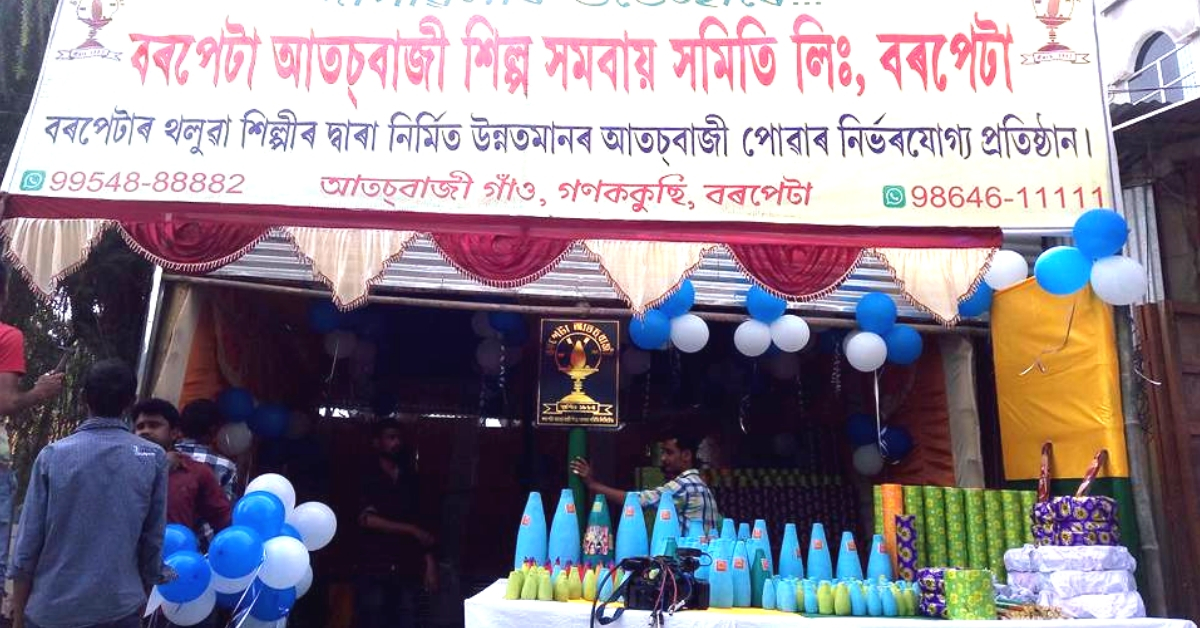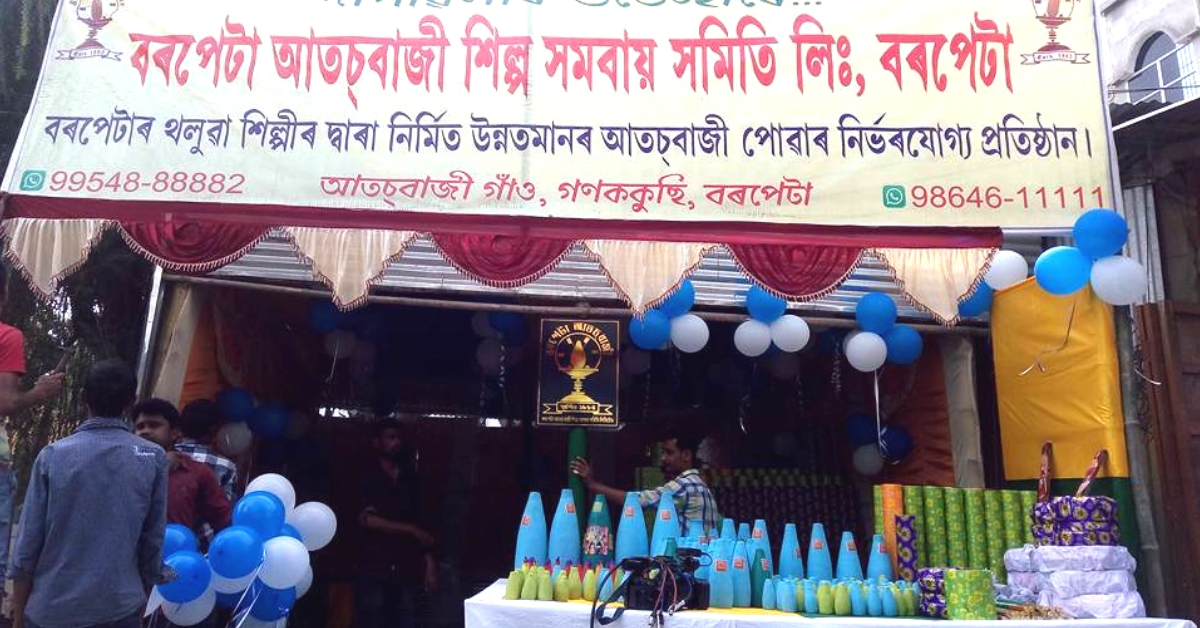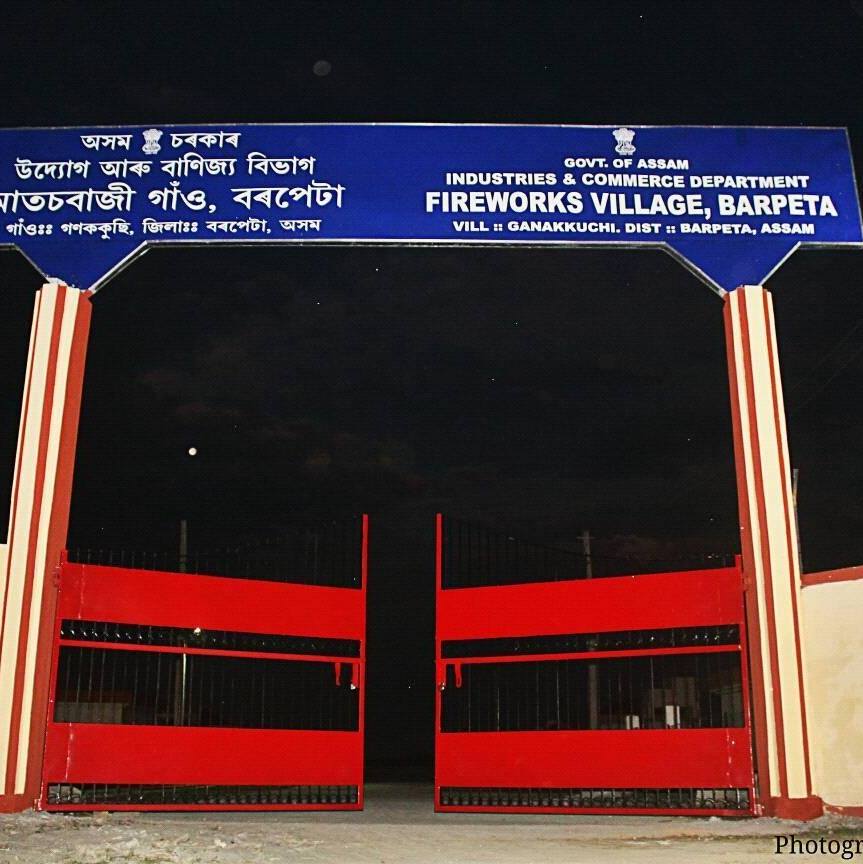Looking For ‘Green Crackers’? This Assam Village Has Been Making Them For More Than 130 Years
Low noise, low flame, low chemicals — Ganakkuchi's green crackers have been turning Diwali into a starry night since 1885!

In a judgement last month, the Supreme Court, among other things, set a two-hour time window for when citizens can burst firecrackers while also issuing a crackdown on certain dangerous pollutants like barium nitrate and aluminium that are used to manufacture them. While scientists at the Council of Scientific and Industrial Research (CSIR) are working on developing ‘green crackers,’ the court’s orders may have given the residents of Ganakkuchi village in Barpeta district, Assam, who are involved in the process of making crackers, a new lease of life. This is because, for 130 years, they have used a formula which ensures these products remain mostly eco-friendly.
According to this NDTV report, residents have been making ‘toobris’ or flower pots with low noise and flame using a traditional formula in vogue since 1885.
“Our products are almost like green crackers. They are less polluting as we don’t use high explosive content, but the issue in our country is that we need experts and a system to certify which is a green cracker and which is not. Once that happens, it will give a boost to indigenous industries like ours,” said Gopjit Pathak, a traditional cracker manufacturer from Ganakkuchi, to NDTV.
“We don’t use barium nitrate now that it has been banned by the government. All work is done by hand,” he adds, asserting his family has been involved in this trade for four generations.

Even though the court has done little to clearly define the characteristics of what makes up a ‘green cracker,’ the Assam Pollution Control Board believes that traditionally-made crackers emit much less pollution than the conventional Chinese or Sivakasi-made firecrackers.
With an annual turnover of Rs 1 crore, the makers of indigenous, yet eco-friendly crackers, are looking to raise it five-fold with the new court order, reports the media publication.
While the Assam government has reportedly provided some infrastructure to these indigenous cracker makers near the Ganakkuchi village, the shift from hand to machine is yet to happen.
Also Read: What Is a Green Firecracker? Here’s How Your Diwali Explosions Can Be Eco-Friendly and Bright
“We are yet to move to machines, and the entire process is manual so we cannot try a variety of products and the volume of production is also low,” said Narayan Das, one of the workers at an indigenous cracker unit in Assam, to the publication.

Green-cracker prototypes, developed by scientists at the CSIR’s National Environmental Engineering Research Institute (NEERI) and possibly the indigenous ones made in Ganakkuchi, could be sent to the Petroleum and Explosives Safety Organisation (PESO). The PESO is a statutory body which authorises and frames rules for the safety and stability of products that are governed under the Explosives Act, 1984, and the Inflammable Substances Act, 1952. Once PESO approves these prototypes, they can assist manufacturers with the production process, besides helping them meet the steep demand for such products.
(Edited by Gayatri Mishra)
Like this story? Or have something to share? Write to us: [email protected], or connect with us on Facebook and Twitter.
If you found our stories insightful, informative, or even just enjoyable, we invite you to consider making a voluntary payment to support the work we do at The Better India. Your contribution helps us continue producing quality content that educates, inspires, and drives positive change.
Choose one of the payment options below for your contribution-
By paying for the stories you value, you directly contribute to sustaining our efforts focused on making a difference in the world. Together, let’s ensure that impactful stories continue to be told and shared, enriching lives and communities alike.
Thank you for your support. Here are some frequently asked questions you might find helpful to know why you are contributing?


This story made me
-
97
-
121
-
89
-
167











